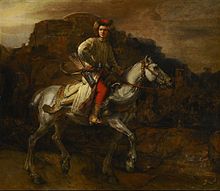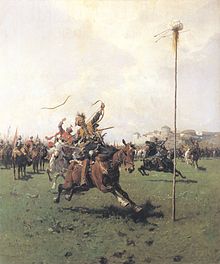

Lisowczyks or Lisowczycy (Polish pronunciation: [lisɔfˈt͡ʂɨt͡sɨ]; also known as Straceńcy ('lost men' or 'forlorn hope') or chorągiew elearska (company of elears); or in singular form: Lisowczyk or elear) was the name of an early 17th-century irregular unit of the Polish–Lithuanian light cavalry. The Lisowczycy took part in many battles across Europe and the historical accounts of the period characterized them as extremely agile, warlike, and bloodthirsty. Their numbers varied with time, from a few hundred to several thousand.

The origin of the group can be traced to konfederacja (a form of semi-legal mutiny of royal forces, practiced in the Kingdom of Poland and then in the Commonwealth), organized around 1604 by Aleksander Józef Lisowski. They began to grow in strength and fame a few years later, when Lisowski's irregulars were incorporated into the forces fighting in Muscovy. The Lisowczycy unit of the Polish cavalry received no formal wages; instead, they were allowed to loot and plunder as they pleased. They relied on their speed and fought without tabors, foraging supplies from lands they moved through. The Lisowczycy were feared and despised by civilians wherever they passed and they gained dubious fame for the scores of atrocities they carried out (pillage, rape, murder and other outrages). However, they were also grudgingly respected by their opponents for their military skills. They did not hesitate to plunder even their homeland, where they sacked the Racovian Academy university of the Polish brethren. Such actions were among the reasons the Commonwealth ruler Sigismund III Vasa tried to keep them away from the Commonwealth for as long as possible.
The Lisowczycy took part in many conflicts, including the Dymitriads (where their actions help explain the text of the infamous placard in Zagorsk: three plagues: typhus, Tatars, and Poles), at the Battle of Humenné (where they prevented a Transylvanian army from laying siege to Vienna) and in the Battle of White Mountain (where they participated in Bohemia's defeat). They were eventually disbanded in 1635.
An account of Lisowczycy's exploits was written by their chaplain, Wojciech Dembołęcki (or Wojciech Debolecki), in Przewagi Elearów polskich co ich niegdy Lisowczykami zwano (1619–1623) (Deeds of Polish Elears once known as Lisowczycy (1619–1623)).
